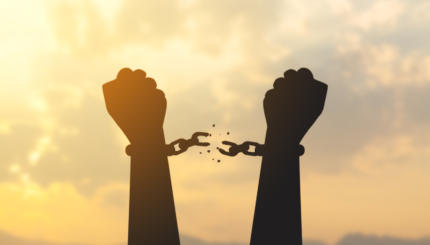This was my first Pesach away from home. I am a first-year college student and although I love my college and my vibrant Hillel community there, I was looking forward to spending the seders with my own family. And yet, as much as I wanted an idyllic at home, I knew that it would be impractical, given the amount of class I would miss while traveling. Logistically, it just didn’t make sense, so I stayed on campus. It was clear to me that there was a reason I was supposed to be at college instead of at home. And so, rather than accepting an invitation to someone else’s first night , I decided to host and lead my own.
My mother has led the family seder every year I can remember, so a woman at the head of the table is definitely not foreign to me. However, the idea of leading it myself was intimidating. I have never been confident asserting my voice in Jewish ritual (for example, saying Kaddish for my dad always made me nervous). I decided not to let this fear stop me and I reached out to other first-year students who might be uncomfortable going to a large communal seder, not have a smaller seder to go, or just not seek one out in the first place.
I expected about fifteen students, but even more showed up. The diversity of the group was wonderful, ranging from hopeful converts to unaffiliated Jews who had never before experienced a seder to Orthodox students who had never missed one in their lives. Consequently, the discussions during Maggid were rich with viewpoints informed by various religious ideologies and academic backgrounds.
In planning the seder, one of my priorities was to make a safe space where all of the attendees could feel comfortable. Before beginning, I made it clear that everyone was welcome at this seder, and explained the orange on the seder plate to illustrate my point. To make the seder interactive and inclusive, we took turns reading paragraphs from the during Maggid. Only a few people were familiar with Hebrew or Aramaic so we conducted most of the seder in English. We sang rousing renditions of Chad Gadya, Echad Mi Yodeia, and Adir Hu.
Since I’m known for my feminist tendencies, nobody was surprised that I included Miriam’s Cup and discussed the strong women who are the backbone of the Exodus story. People also appreciated that I used (and encouraged others to use) gender-neutral language. We had a lot of really good conversations about the Four Sons: do we gain anything from them being male, or do they actually reflect children of any gender? How do we rationalize pushing away the Wicked Child from the Jewish community? What are the feminist implications of the Haggadah’s use for the feminine you in “you should say [to the Simple Child]?”
Although I definitely missed my mother’s charoset and all the customs we have at home, I really enjoyed leading this seder. I am so happy I was able to provide and facilitate a Pesach experience for all those people. As much preparation and stress as it took to plan, I’m looking forward to doing it again next year.
Like this post? Join the conversation through MyJewishLearning’s weekly blogs newsletter.
Kaddish
Pronounced: KAH-dish, Origin: Hebrew, usually referring to the Mourner’s Kaddish, the Jewish prayer recited in memory of the dead.



